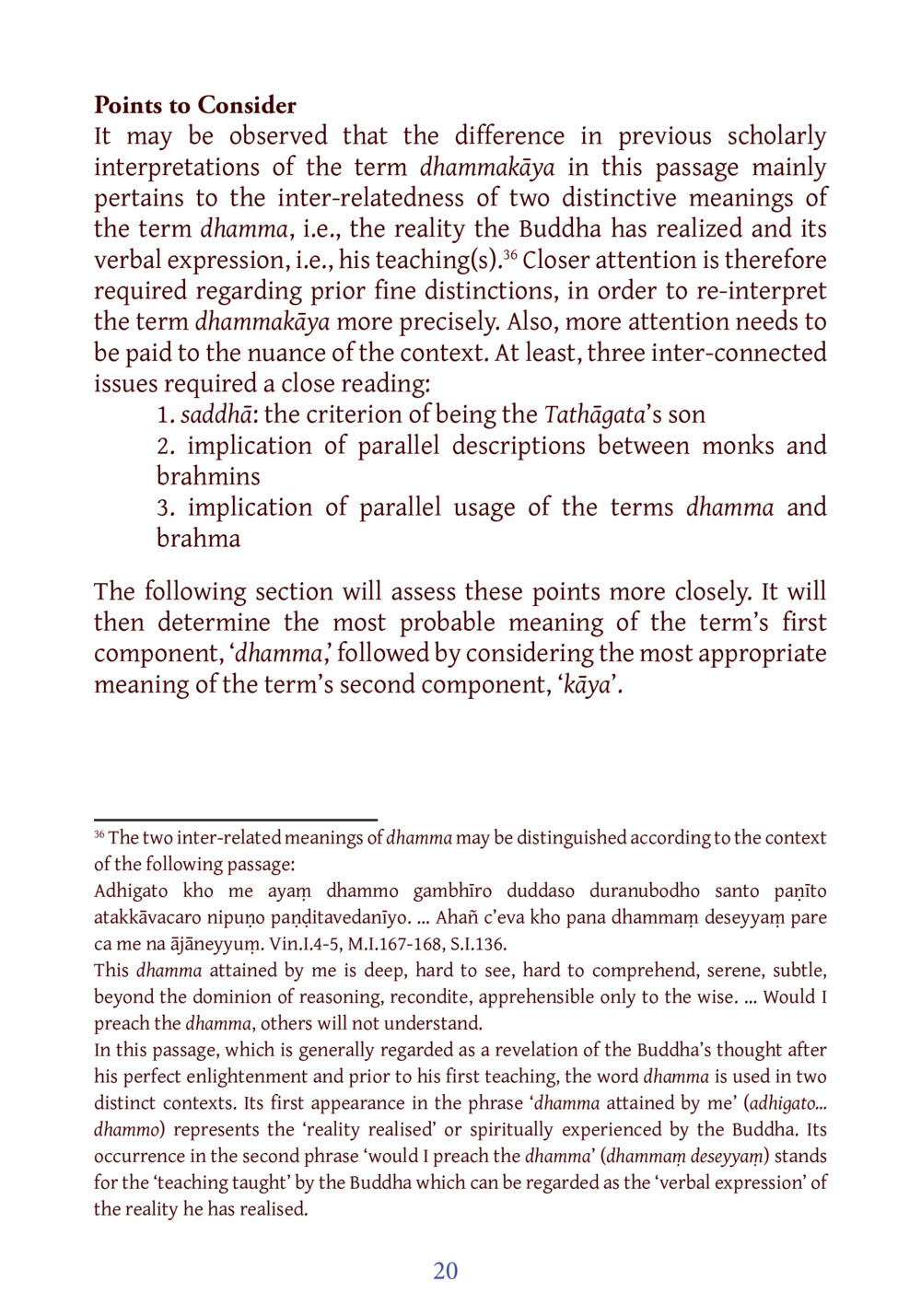Understanding Dhammakāya: A Scholarly Interpretation : หน้า 41/141
DIRI Journal : หน้า 41/141 An exploration of the term dhammakāya, focusing on its meanings and implications in Buddhist teachings, particularly the teachings of the Buddha.
0 ครั้ง

สรุปเนื้อหา
This text delves into scholarly interpretations of the term 'dhammakāya', emphasizing the need for a nuanced understanding of 'dhamma' as both a realized reality and a verbal expression. It identifies three interconnected issues for further analysis: the criterion of saddhā as the Tathāgata's son, the parallels between monks and brahmins, and the use of the terms dhamma and brahma. The discussion references a key passage illustrating the dual meanings of dhamma as experienced by the Buddha and communicated in his teachings. The aim is to provide a re-interpretation of dhammakāya that is mindful of these complexities while enhancing comprehension of the Buddha's insights, specifically how deep and profound dhamma is perceived and articulated. For further insights, please visit dmc.tv.
หัวข้อประเด็น
-Meaning of dhammakāya
-Interpretation of dhamma
-Role of saddhā in Buddhism
-Comparative analysis of monks and brahmins
-Dual meanings of dhamma in Buddhist texts
ข้อความต้นฉบับในหน้า
หน้าหนังสือทั้งหมด













































































































































